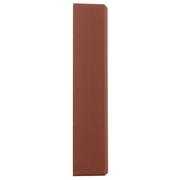How to sharpen pruning shears
Sharp pruning shears are indispensable for tidy pruning. If the blade is blunt, you bruise branches instead of cutting them cleanly, and that is disastrous for the plant. Proper maintenance of your pruning tools not only ensures better pruning results, but also extends the service life of your tools. This article tells you how to sharpen, clean and disinfect pruning shears. In addition, we will discuss the difference between pruning shears, garden shears and loppers sharpening.
Why is it important to sharpen your garden shears?
Sharp pruning shears make a smooth cut without fraying. This prevents infections in plants and makes pruning lighter and more precise. A blunt blade actually causes bruised branches and fatigue in your hands.
Types of pruning shears
Pruning shears come in two varieties: bypass and anvil. A bypass pruning shear works like classic shears, with one sharp blade sliding past a blunt catch blade. You typically sharpen only the top blade here. With anvil pruning shears, one sharp blade pushes on a flat anvil. Again, you sharpen only the cutting blade. In both cases, it is important to follow the original sharpening angle and not remove too much material.
Do your pruning shears have a curved blade, like a parrot beak? For best results, use a sharpening stone or file that follows the curvature of the blade. Choose a concave sharpening stone for a convex blade, or a convex sharpening stone or sharpening steel for a concave blade.
How to sharpen pruning shears
Clean the blade first and check for damage. Use a small sharpening stone or a diamond file that fits well in your hand with a grit size of about coarse 400 to 1000 grit. Place the sharpening stone flat on the sharpened portion of the blade and move the sharpening stone in long strokes along the cut.
Then turn the pruning shears over and feel on the other side to see if a burr has appeared. This is a small, raised edge of metal that you simply remove by a few light strokes with the sharpening stone on the other side. Don't actually sharpen the back of the blade though, just 'break’ the burr.
Do your pruning shears feature two sharpened blades? Repeat this process with the other blade. How long you need to sharpen depends very much on how dull the edge is, but usually 5 to 20 strokes per side will be enough. You'll know you're done when the edge feels smooth and sharp again, without damage or burrs.
How to sharpen garden shears
Garden shears tend to be a bit more robust than standard pruning shears and are used for thicker branches or stiff plant stems. The sharpening method is basically the same, but preferably use a slightly coarser sharpening stone (200 to 400 grit) to take off material faster.
Also pay close attention to the shape of the blade: some garden shears have a slightly curved blade. If so, follow the curve of the blade when sharpening and keep the sharpening angle constant. Again, don't forget to remove the burr on the unsharpened side.
How to sharpen branch loppers
Loppers have longer levers and thicker cutting blades meant for cutting tough branches. Because the blade is larger, a coarse sharpening stone (200 to 400 grit) that takes material off relatively quickly works best. A diamond file or semicircular file can also be useful with sharply curved blades.
As with the other tools, sharpen in the direction of the cut and maintain a consistent angle. Check the blade for burrs and remove them with light strokes. Because the blade is often heftier, you will spend a little more time than with pruning shears.
Maintaining your pruning shears
When should you be doing some maintenance on your pruning shears? Preferably, after each pruning task! Even high-quality pruning shears can become dull if not properly maintained. Dirt, plant sap and moisture cause rust and blockages in the mechanism. Regular maintenance prevents major sharpening and keeps your pruning tools in top shape.
Cleaning and disinfecting pruning shears in a few steps
- Remove dirt: Dry and clean the pruning shears thoroughly with a cloth or brush after each gardening job.
- Clean pruning shears: remove grease from the blade with alcohol or a special resin remover.
- Disinfect pruning shears: use a cleaning alcohol to kill bacteria, fungi and viruses. This prevents you from transmitting plant diseases.
- Oil: apply a thin layer of oil after cleaning to prevent rust.
- Check hinge and springs: make the mechanism smooth with a drop of oil.

























